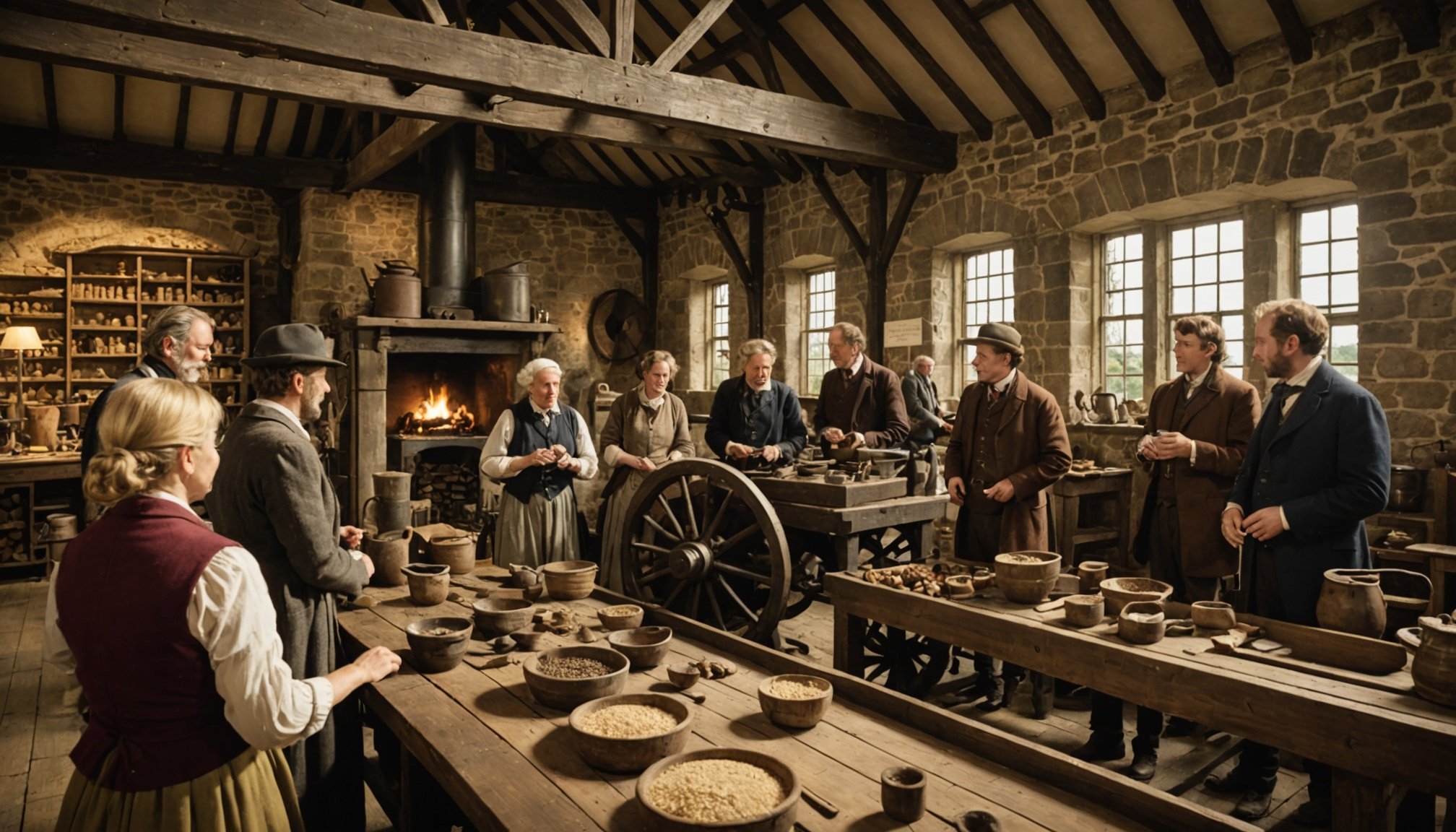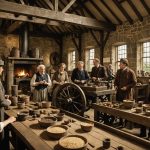Overview of British Mills’ Historical Significance
The development of British mills history is deeply intertwined with the Industrial Revolution, marking a turning point in both technology and society. Mills were pivotal in propelling Britain’s economy forward, as they revolutionised the textile industry and other sectors. Their influence reshaped the social and economic landscape, transforming agrarian societies into urban industrial powerhouses.
During the late 18th and early 19th centuries, industrial heritage became the backbone of Britain’s economy. This transformation was characterised by the widespread establishment of mills, which mechanised cotton spinning and weaving processes, enhancing productivity and efficiency. As a result, mills facilitated the mass production of goods, significantly contributing to the country’s economic growth and burgeoning global influence.
In the same genre : Discover the Most Captivating Tours Exploring the Evolution of British Military Strategy
British mills were not just economic engines; they also became cultural icons steeped in cultural significance. These structures symbolised progress and innovation, embodying the spirit of an era that changed the world.
Key historical figures, such as Richard Arkwright and Samuel Greg, were instrumental in fostering the development of mills. Arkwright’s invention of the water frame, for example, was a pivotal innovation, underscoring the integral role that mills—and their creators—played in shaping Britain’s industrial and cultural identity.
Also to see : Discover the Best Traditional British Lace-Making Workshops for Engaging Tourist Experiences
Interactive Experiences at British Mill Museums
Explore the unique mill museums of Britain, offering a journey through time with their interactive exhibits and dedicated focus on heritage education.
Top Mill Museums to Visit
Some of the most celebrated mill museums across Britain include Quarry Bank Mill, Styal; Leeds Industrial Museum, Armley; and Cromford Mills, Derbyshire. Each museum boasts distinctive features. For instance, Quarry Bank Mill presents an authentic working mill environment, while Leeds Industrial Museum emphasizes the region’s textile history. These museums, dedicated to preserving industrial heritage, provide robust visitor accessibility with wheelchair access, audio guides, and suitable facilities for families.
Engaging Interactive Exhibits
At these mills, visitors have the option to engage with hands-on exhibits including working machinery demonstrations. Opportunities for participation broaden understanding allowing guests to try weaving or dyeing. Seasonal events often feature special exhibits illuminating lesser-known aspects of mill history, making each visit unique. Frequent exhibitions might include live re-enactments and workshops themed around specific historical periods.
Guided Tours and Educational Programs
Guided tours enrich the museum experience by offering insights from knowledgeable guides. Educational programs cater to diverse age groups, often collaborating with local schools to offer tailored educational content. These programs empower communities by connecting them with their industrial roots and fostering a sense of pride and understanding in Britain’s rich tapestry of heritage.
Tips for Planning Your Visit
When it comes to exploring British mills, some strategic planning can enrich your experience significantly. Tourist tips are crucial in making the most out of your visit, especially considering the nuances of each location’s history and charm.
Planning visits strategically allows you to optimise your time and resources. The best times to visit often depend on seasonal events and local festivals, providing a more comprehensive experience. Spring and early autumn months tend to be ideal, as many mills schedule demonstrations and guided tours during these peak times.
Consider creating itineraries focused on specific regional clusters of mills to enhance your visit. This could mean dedicating a day to the historical gems of the Lancashire region, and another to the scenic mills nestled in Yorkshire. Such clustering makes your travel efficient and rewarding.
Transportation options abound, from renting cars for a more flexible schedule to using public transportation for a cost-effective journey. Trains like the ones in the British Rail system connect many regions, making them a reliable choice.
Lastly, local accommodations range from quaint bed-and-breakfasts to modern hotels, ensuring there’s something to suit every traveler’s taste. Planning your visit with these tourist tips will certainly lead to an unforgettable British mill adventure.
Enhancing Your Experience with Multimedia Resources
Engaging with a site before visiting can deepen your connection and curate an enlightening experience. Virtual tours offer a chance to explore from the comfort of your home. These digital resources include vivid imagery and historical insights, making history accessible to everyone. Websites and apps provide these immersive experiences, allowing you to explore mill operations and features interactively. Video documentaries, rich in visuals and narratives, delve into the history and evolution of mills, offering a unique perspective on their significance.
Online Resources for Pre-Visit Engagement
Before your visit, utilize websites that offer virtual tours and digital resources for a thorough understanding of mill operations. Apps often include interactive maps, pinpointing mill locations, making the planning seamless. Watching video documentaries can significantly enhance your comprehension of mill history, presenting insights that enrich your visit. These documentaries not only offer factual content but also invite viewers into the workings and stories behind the mills.
Using Social Media to Connect with Other Visitors
Connect and share experiences through social media by exploring hashtags specific to this interest. Joining groups dedicated to mill visits invites the sharing of insightful tips and captivating user-generated content. Following museum social media pages keeps you updated on upcoming events and activities, enhancing your visit’s excitement and anticipation. Engaging with these platforms builds a sense of community among visitors.
Conclusion: Realizing the Legacy of British Mills
British mills, with their rich history and heritage, hold a lasting impact on both local communities and the broader cultural narrative. The preservation of these historical sites is crucial not only for safeguarding valuable artifacts but also for maintaining the cultural heritage that defines much of Britain’s industrial past. This preservation provides an opportunity for both education and cultural enrichment.
Tourism plays a pivotal role in sustaining these mill-related experiences. It serves as a conduit for greater understanding and appreciation of how mills functioned within their communities and the significant contributions they made to the economy. Encouraging tourists to actively engage with and explore these sites can foster a deeper connection to local heritage, offering a tactile experience of history.
Moreover, by supporting mill tourism, visitors contribute directly to the preservation and maintenance of these historic places. Tourist interest and economic participation help ensure the ongoing vitality of mill sites, allowing them to educate future generations. In this way, tourism aids in the celebration and continuation of the rich legacy woven into the history of British mills. Thus, as stewards of this heritage, tourists can play an active role in the ongoing story of these fascinating historical landmarks.
















